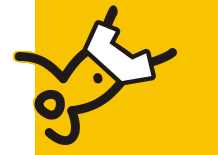Anton Chekhov in Crimea. Chekhov's White Dacha in Yalta.
The White Dacha was built in 1898 in Autka, Yalta’s district, following Chekhov's success with The Seagull. In autumn 1898 Chekhov arrived to Yalta. Within a year (October 1898 - September, 1899) he had the house completed for him under the project of architect Leo Schapovalov. Chekhov himself planted a variety of trees including mulberry, cherry, almond, peach, cypress, citrus, acacia and birch. He also kept dogs and tame cranes in the premises. The White Dacha was one of the most original buildings in Yalta. From the study room one can see the seafront that inspired The Lady with the Dog, and out the back side you watched the scene that inspired setting of The Cherry Orchard.
House-warming party for the "White Dacha" took place on September 9, 1899. The writer lived at Yalta’s residence since August 1898 till May 1904 with his mother Eugenia and sister Maria. The writer’s wife, actress of the Moscow Art Theatre, Olga Knipper – Chekhova spent on the Dacha her holidays.
Some of his best works The Lady with the Dog, The Bishop, On the Christmas-tide, The Three Sisters and The Cherry Orchard were written here, the first full collection of works was edited here as well in August, 1901.
Maria Chekhova inherited Anton’s possession of the Dacha in Yalta, money and the income from drama work. After Chekhov's death, till 1917, Maria Chekhova was living on the Dacha in warm season to save the house and do some repairing. She was in Moscow in winter, working with the brother's archive. The house was kept on her personal money. Maria Chekhova saved untouched all decors of writer’s rooms and also the most valuable literary archive. Before October revolution, in spring of 1917, Maria and Eugenia Chekhovy moved from Moscow to Yalta for fixed residence.
In the year 1919 the White Dacha was declared the national property. Two years later, in 1921 The White Dacha was officially recognized as a house-museum, and Maria Chekhova became its first director.
One of the most difficult periods in the history of the museum was the period of the WWII. The Germany major ranked officers lived in the White Dacha in the period of German occupation of Yalta. Due to Maria Chekhova, who was aged but devoted to her brother’s heritage, the White Dacha was saved and none of the memorial exhibits disappeared.
Maria Chekhova died in 1957 when she was 94. She was buried on the Yalta cemetery near the graves of their mother Eugenia and their brother Michael Chekhov.
Gurzuf’s branch of the museum was opened in 1995. Today Chekhov’s house-museum is the centre of culture and literature in Yalta. It is a venue for many literature parties, musical and theatrical performances, celebrations devoted to the special dates of museum and Chekhov’s family.

























 No places
No places New Year
New Year Unready
Unready Video exist
Video exist Skisportssted
Skisportssted

